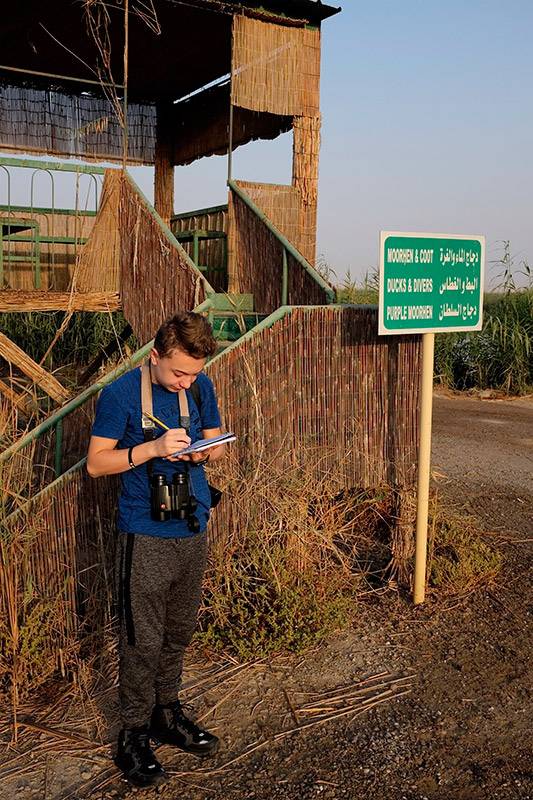I Love Nature 5
Guest blog by Jaden Pope
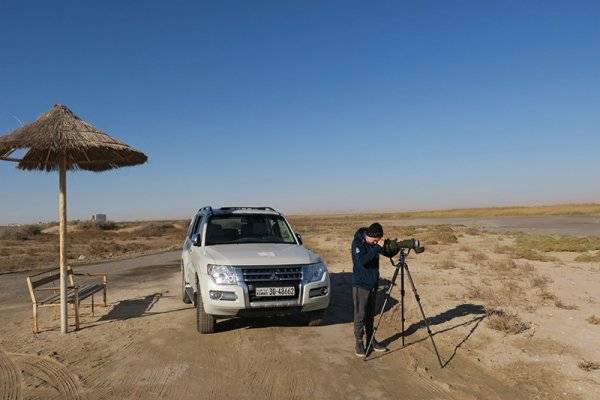
A bird survey in Kuwait
My name is Jaden Pope and I am from Johannesburg, South Africa. I came to Kuwait when I was four years old in 2007 and have lived there until the end of January 2018 when I went back to South Africa.
I am enjoying school in South Africa and it is very different compared to Kuwait because of the big choice of inter school sports, smaller class sizes, the large school grounds and green sports fields and so many things to do over the weekend, all year round. In Kuwait there is not as much choice and you could get a little bored after a while of doing the same things over and over again. But Kuwait also gave us some amazing opportunities like traveling to many different countries, feeling safe due to the low crime rate and not having to look over your shoulder. I was amazed that locals would leave their car running on very hot summer days to keep the AC going, while they quickly ran into a shop to buy some water or in some cases blow the hooter for the owner of the shop to come out and take their order!
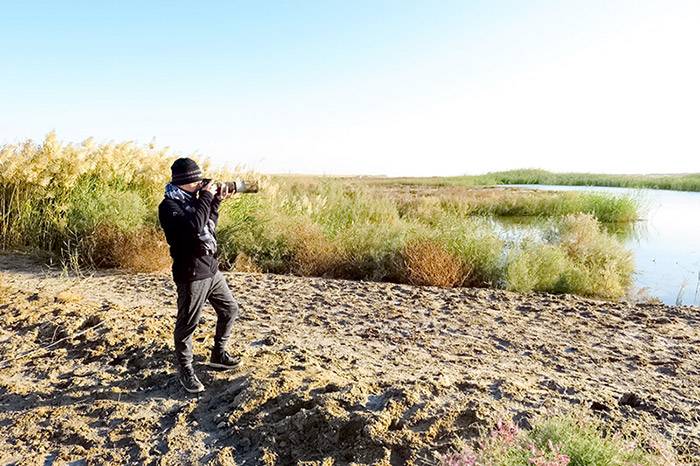
Taking part in the Duke of Edinburgh Award was a great experience for both me and my friends from New English School in Kuwait and it helped us to become a little more independent as well using our skills and individual strengths in the team to get through some of the challenges during the award, especially on the hikes in Kuwait and Fujairah.
The categories I chose for the Bronze Certificate were golf (sport), bird surveys at Al-Jahra (service) and chess (skill). My favorite category was the bird surveys because I got to learn about many new birds, added quite a few to my life list (including some rarities that other birders found) and most importantly to learn the calls of some birds, so I knew what they were.
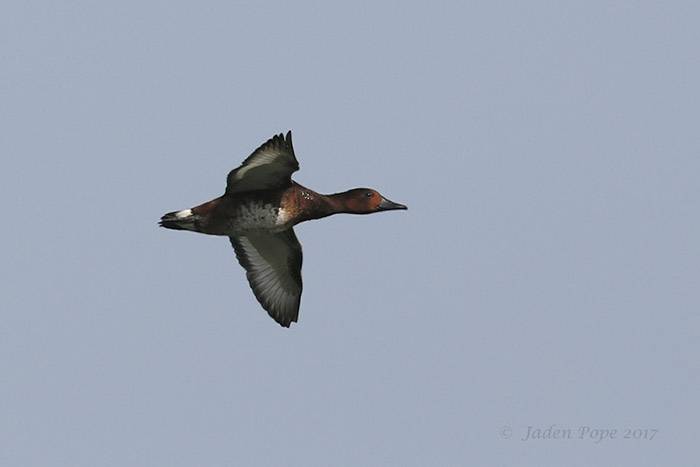
I did the weekly surveys with the help of my dad (Mike Pope) by car and on foot. I started these surveys at Al-Jahra Pool Nature Reserve which is one of seven IBAs (Important Bird Areas) in Kuwait in April 2017, but it was from September 2017 to January 2018 that I submitted formal monthly reports to the EPA. To ensure the records were not lost, my dad logged each survey on eBird for me which also ensured that they are available for others to check.
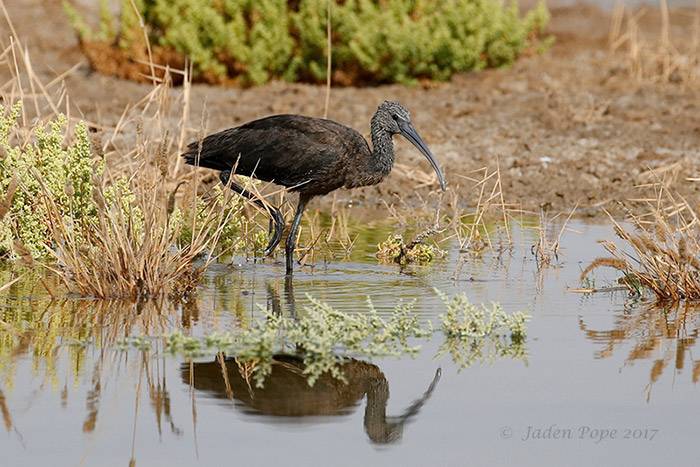
I also understood that it was important to do the same transect on each survey, to give consistency to the results, learned some basic identification skills as well as how to estimate (count) some of the bigger flocks of shore birds. The goal of my surveys was to record the species and abundance of all the IBA Trigger Species.
Birdlife International defines Trigger (or qualifying) bird species as those for which a site has been recognised as an IBA under any of the global (or, where appropriate, regional or sub-regional) criteria.

For the Jahra Pools Reserve Survey the Trigger Species that will be monitored during the survey period included both Threatened and Soaring Species, but I also recorded all the other resident and migrant species seen for completeness.
Threatened Species include globally threatened species with the following status CR (Critically Endangered), EN (Endangered), VU (Vulnerable) – but for Jahra Pools, NT (Near Threatened) species will also be recorded (as their status could change to either VU or LC (Least Concern) in the future).
Soaring Species are defined as birds that can maintain flight with little wing flapping and use rising air currents or thermals to migrate. These are birds like buzzards, eagles, falcons, harriers, hawks, kites, vultures, cranes, pelicans and storks that cross Kuwait during migration.
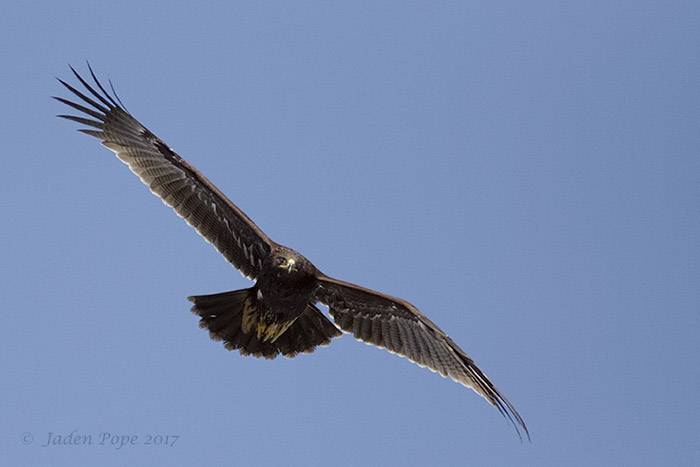
My weekly surveys started on 23 September 2017 which was the tail end of autumn passage and was completed on 12 January 2018 while many wintering birds were still present.
I recorded a total of 146 species overall (36% of total birds of Kuwait (408)) with an abundance of 17,778 birds over the 4-month survey period, which highlights why Jahra Pools Reserve is worthy of its IBA status.
Finally I would like to thank Dr. Abdullah Al Zaidan of the EPA, for giving approval to conduct these surveys for my DoE Bronze Award; Omar Al-Shaheen, also of the EPA, for reviewing the monthly reports and ensuring access to the pools; Abdulrahman Al-Sirhan for assistance in describing the habitat and flora of the Al-Jahra Pool Nature Reserve; Mike Pope (my Dad) for driving, teaching and helping me with identification as well as survey techniques, and Richard Porter for encouraging me to write this post.
Thank you to everyone who encouraged me during this interesting project which opened my eyes to the importance of monitoring IBAs.
